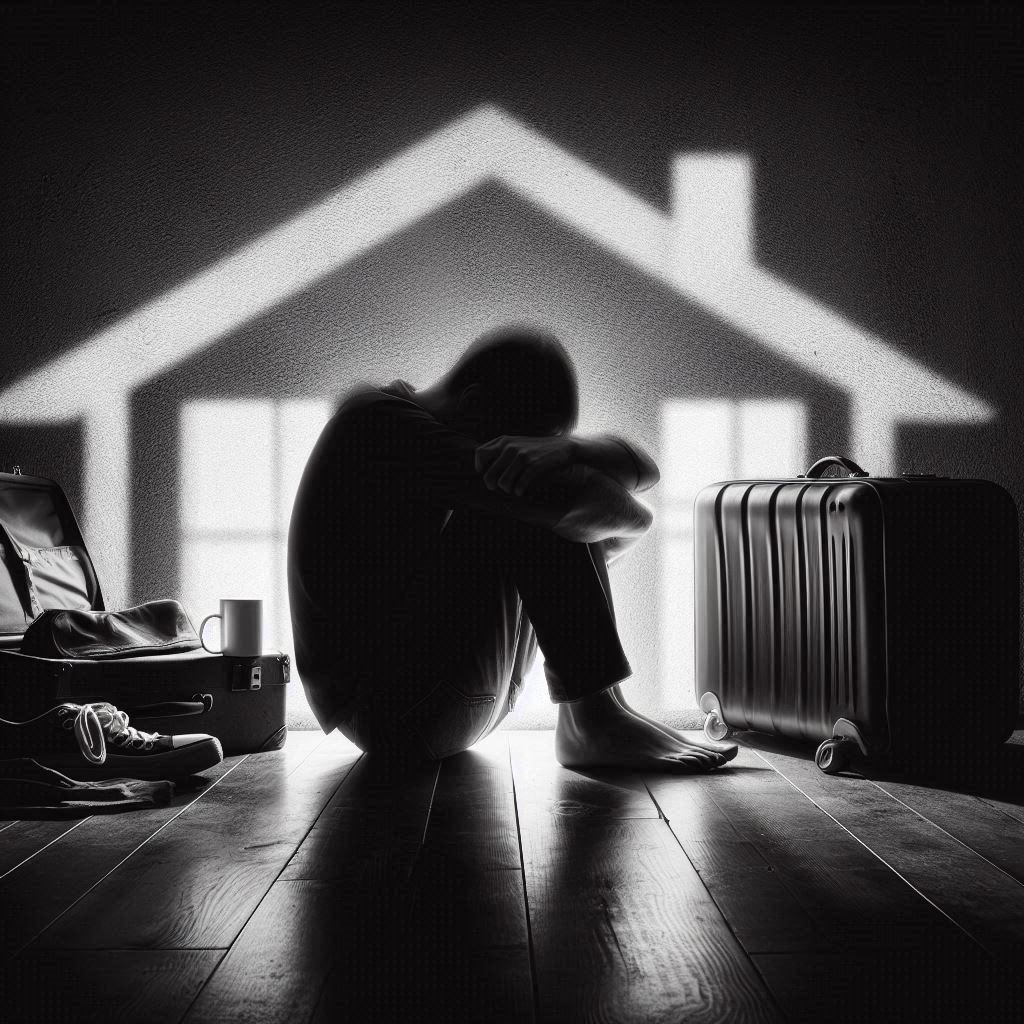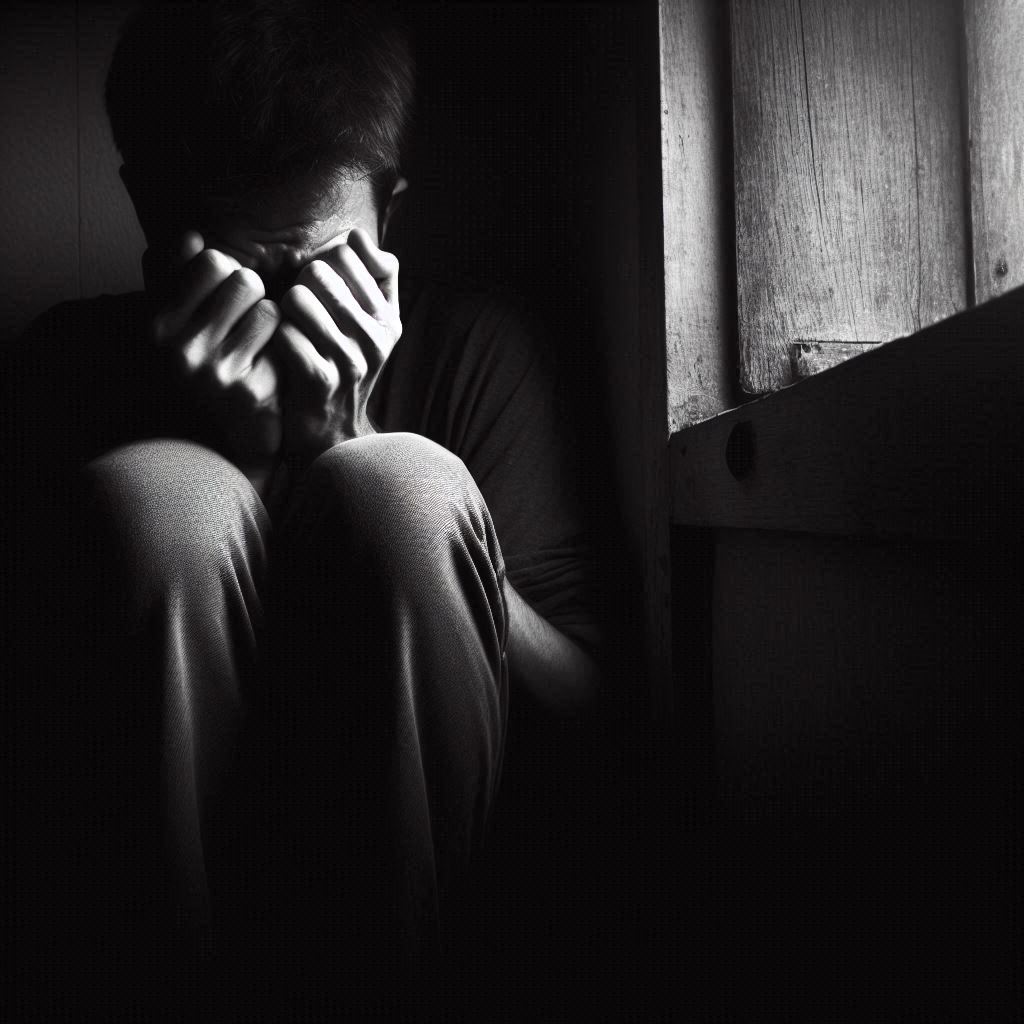Fear can sometimes feel like it has a life of its own, quietly reshaping routines and limiting choices. For those living with agoraphobia, the avoidance of certain places or situations isn’t just preference—it’s survival.
Agoraphobia is more than a fear of open spaces; it’s a complex reaction to the fear of feeling trapped or helpless in environments that may trigger panic. Recognizing the early signs, like avoiding crowded areas or staying overly reliant on safe zones, can help address the condition before it worsens.
This post will explore key behaviors, offering clarity and understanding for those seeking help or supporting someone in need.
Common Signs of Agoraphobic Avoidance
Agoraphobia doesn’t just affect where someone goes—it influences how they live. People with agoraphobic tendencies may find themselves adapting their daily routines in ways that keep them away from potential triggers.
These changes might seem small at first but can quickly become limiting. From avoiding crowded spaces to feeling trapped by the safety of home, understanding the behaviors linked to agoraphobia is a crucial step toward support and recovery.
Avoidance of Crowded Places
Busy areas like malls, stadiums, or public transportation hubs can feel overwhelming. For someone with agoraphobia, these environments are avoided at all costs.
The fear isn’t just about the number of people—it’s the risk of feeling trapped or unable to leave quickly. Crowds can create scenarios where personal control feels lost, amplifying anxiety.
You might notice patterns of declining invitations to events or skipping crowded grocery stores during peak hours. Over time, this avoidance only reinforces the fear, creating a cycle that’s hard to break.
Fear of Leaving Home

The home often becomes a fortress—a place of safety that feels predictable and controlled. But this sense of security can also become a prison. Some people with agoraphobia feel unable to step outside, even for basic tasks.
The front door symbolizes the unknown, and stepping past it feels like an insurmountable challenge. This reluctance isn’t laziness or stubbornness; it’s a response to overwhelming fear. Even with motivation or encouragement, the battle to leave home often feels like too much to bear.
Dependence on Safe Spaces
For individuals with agoraphobia, certain places or people provide safety. These “safe zones” become essential, offering relief from what feels like constant danger. It could be a specific room, a close friend’s house, or even a nearby park.
Stepping outside of these comfort zones can trigger extreme anxiety. Many find themselves relying heavily on close family members or trusted individuals to navigate daily life. This dependency might seem manageable at first, but it often limits independence and can complicate relationships over time.
Physical Symptoms in Anxiety-Inducing Situations
Agoraphobia doesn’t just play out in the mind—it takes a toll on the body too. When faced with a feared situation, physical symptoms often come on strong and fast. These can include sweating, trembling, chest tightness, dizziness, or even full-blown panic attacks. The body reacts as if it’s in immediate danger, intensifying the urge to flee. The fear of these symptoms often becomes as overwhelming as the fear of the situation itself. It’s a vicious cycle: the symptoms fuel the fear, and the fear fuels the symptoms.
Social Isolation
Over time, avoidance behaviors can lead to complete withdrawal from social life. Parties, gatherings, and even simple outings to meet friends might fade into the past. Isolation becomes a way to avoid stress, but it comes at a cost. Without regular interaction, feelings of loneliness and depression can grow. Relationships may suffer, leading to misunderstandings or frustration from loved ones who don’t fully grasp the struggle. What starts as avoidance of specific situations often leads to an overall shrinking of one’s world.
Understanding these signs is the first step to empathy and action. Agoraphobia can make life feel smaller, but with the right support, freedom is possible.
Triggers of Agoraphobic Avoidance Behavior
Agoraphobic avoidance doesn’t appear out of nowhere. It evolves from specific fears tied to certain places or situations. For many, it’s the anticipation of feeling exposed, trapped, or helpless that drives their behavior. These triggers are often linked to environments where escape feels difficult or help seems unavailable. Understanding these common triggers can shed light on why someone might avoid them and offer a clearer path toward support.
Public Transportation

Buses, trains, and subways aren’t just modes of transportation—they’re potential battlegrounds for someone with agoraphobia. The tight spaces, unpredictable schedules, and inability to leave at will can feel overwhelming. Imagine being on a packed subway and feeling as though there’s no way out if panic hits. That thought alone is enough to steer many away from public transportation entirely.
People dealing with this fear might avoid commutes, even if it means dropping work opportunities or social plans. They might rely heavily on personal vehicles or ride services just to maintain a sense of control. This avoidance, while comforting short-term, can complicate routines and limit independence over time.
Open Spaces
Wide, open areas like parks, parking lots, or plazas may seem peaceful to most. But for someone with agoraphobia, they can feel like the exact opposite. These spaces often lack defined boundaries, leaving individuals feeling exposed and vulnerable. The fear isn’t always about the physical space itself but the idea of being in a situation where help isn’t close by.
Have you ever felt uneasy walking across an empty lot at night because it felt too open? For someone with agoraphobia, that unease might be constant in places like beaches, fields, or even expansive, unfamiliar roads. This could lead them to avoid outdoor gatherings, nature activities, or any setting that feels overwhelmingly vast.
Enclosed Spaces
On the flip side, confined areas like elevators, small classrooms, or even airplanes can spark a wave of anxiety. These spaces often come with the fear of being trapped. The thought of not being able to leave quickly—whether due to mechanical failure, long delays, or social pressure—can cause extreme discomfort.
Someone facing this fear might take the stairs to avoid elevators, even when it’s inconvenient. They may drive for hours to avoid a quick flight or turn down meetings in compact venues. While these adjustments might ease their anxiety for the moment, they often reinforce the fear over time, making enclosed spaces feel even more impossible to face.
Every trigger of avoidance ripples into daily life, creating barriers that feel insurmountable. With understanding and effort, those affected can work toward breaking these patterns, one step at a time.
Impact of Agoraphobic Avoidance on Daily Life
Agoraphobic avoidance doesn’t exist in a vacuum—it shapes every corner of daily life. What might start as skipping a crowded event can quickly spiral into a pattern of isolation. These behaviors go beyond personal preferences, deeply affecting how someone connects with others, manages a career, and maintains mental well-being. Below, we break down the specific ways this avoidance influences everyday living.
Effect on Relationships
Agoraphobic avoidance can make relationships challenging. When someone avoids social situations, it often leaves loved ones feeling shut out. Imagine repeatedly canceling plans or refusing invitations—not out of disinterest but out of fear. Over time, friends or family might interpret this as a lack of effort, leading to frustration or misunderstandings.
Romantic relationships can also suffer. Partners may feel burdened when they have to adjust their lives to accommodate avoidance behaviors. For example, if dining out or attending events becomes impossible, it limits shared experiences. Professional relationships aren’t immune either. Avoiding work meetings or networking events can create tension with colleagues who may not fully understand the struggle.
The result? A shrinking social circle and strained bonds, leaving individuals feeling more alone than ever. No one chooses this isolation, but the fear of facing triggering situations often feels stronger than the desire to connect.
Career Limitations
Agoraphobia doesn’t just keep people from social events; it also shuts doors in their professional lives. Jobs requiring travel, public speaking, or even regular team collaboration can become impossible to handle. For example, using public transportation to commute or attending a conference might feel like insurmountable challenges. Instead of thriving in their career, people may settle for roles that feel safe but limit growth.
Avoidance also lowers visibility in the workplace. Picture an employee who skips presentations or avoids key meetings to stay in their comfort zone. Over time, this can translate into being overlooked for promotions or leadership roles.
In extreme cases, some may leave the workforce entirely. Working from home might seem like a solution, but even remote roles have challenges. Video calls, deadlines, and unpredictable tasks can still trigger anxiety. The inability to meet these demands further compounds feelings of failure, creating a cycle that’s hard to break.
Mental Health Consequences
Agoraphobic avoidance doesn’t just affect external circumstances—it leaves deep marks internally too. Over time, avoiding feared situations can lead to low self-worth. People may feel incapable of controlling their lives, which paves the way for severe mental health issues.
Depression often develops as isolation increases. The more someone avoids, the smaller their world becomes. With fewer opportunities for joy, they might feel like life is passing them by. Anxiety disorders also tend to overlap. For instance, the fear of experiencing a panic attack in public can create constant anticipatory anxiety. It’s a mental tug-of-war between wanting to engage with the world and feeling paralyzed by fear.
Physical health doesn’t escape unscathed either. Stress from avoidance behaviors can disrupt sleep, appetite, and overall energy. It’s a domino effect—what starts as fear of a single situation grows into an all-encompassing fear that affects mind and body alike.
While agoraphobic avoidance acts as a shield against distress, it unintentionally locks the individual into patterns of limitation. Breaking free isn’t simple, but every step toward addressing it can rebuild the pieces of a fuller, freer life.
Seeking Help for Agoraphobia
Seeking help for agoraphobia can feel overwhelming, but it’s one of the most important steps toward regaining control. There’s no one-size-fits-all approach to managing it, but the right combination of therapy, support, and medication can make a significant difference. The good news? Effective treatments exist, and they’re available for anyone ready to take that first step.
Therapeutic Approaches
Many people begin their recovery journey with therapy, which is often the cornerstone of agoraphobia treatment. Two common and effective methods stand out: Cognitive Behavioral Therapy (CBT) and exposure therapy.
- Cognitive Behavioral Therapy (CBT): CBT helps individuals identify and change the thought patterns that fuel their fear. It’s like rewiring the brain to respond differently to triggering situations. Through structured sessions, patients learn coping mechanisms to challenge their fears. For example, instead of thinking, “What if I panic and can’t escape?” they’re guided to reframe it as, “Even if I feel anxious, I can manage it.” Over time, these mental shifts create healthier responses to anxiety.
- Exposure Therapy: Sometimes, facing fears head-on helps reduce their power. Exposure therapy gradually introduces individuals to their triggers in safe, controlled ways. Imagine peeling an onion one layer at a time—each step brings a bit of discomfort, but it also builds confidence and resilience. For someone avoiding public transportation, this might start with sitting in a parked bus before progressing to a short ride. The ultimate goal is to make previously feared scenarios feel manageable.
Both therapies often work hand-in-hand, and progress doesn’t happen overnight. But with a skilled therapist guiding the process, many people see significant improvements in how they handle daily life.
Support Groups
There’s a unique comfort in connecting with others who understand your struggles. That’s where support groups come in. These communities offer a safe space to share experiences, exchange advice, and simply feel heard.
- Shared Understanding: Ever felt like no one “gets it”? Support groups eliminate that isolation. Everyone in the room knows what it’s like to carry the weight of agoraphobia. Listening to someone describe their own victories and setbacks can be deeply reassuring—and proof that progress is possible.
- Practical Advice: People in these groups often share strategies that worked for them. From relaxation techniques to tips for managing panic attacks, you can walk away with ideas to try in your own life.
- In-person or Online Options: If attending an in-person group feels like too much right now, virtual support groups are a solid alternative. Many online communities, forums, and video sessions provide the same benefits without requiring travel or face-to-face interaction.
Support groups remind you that you’re part of a larger community facing similar challenges. Just knowing you’re not alone can ease some of the emotional strain of agoraphobia.
Medication Options
Sometimes, therapy and support aren’t enough on their own. Medication can be a helpful tool for managing the physical and emotional symptoms of agoraphobia. While it won’t “cure” the condition, it can make therapy more effective and daily life more manageable.
Here are some common options that healthcare providers might discuss:
- Selective Serotonin Reuptake Inhibitors (SSRIs): Medications like sertraline or fluoxetine help regulate mood by increasing serotonin levels in the brain. They’re often prescribed for both anxiety and depression.
- Benzodiazepines: These fast-acting medications, such as lorazepam or diazepam, can ease acute anxiety symptoms. However, they’re usually only used short-term due to potential dependency risks.
- Beta-Blockers: Though not directly treating anxiety, beta-blockers help reduce physical symptoms like a racing heart or sweating during stressful situations.
It’s essential to work closely with a doctor when considering medication. They’ll consider your symptoms, medical history, and lifestyle before recommending a treatment plan. And if one medication doesn’t work, there are usually alternatives to try.
Taking a proactive approach to seeking help creates a path forward. Whether through therapy, connections with others, or medical assistance, the journey to managing agoraphobia is filled with tools and support to ease the burden.
Conclusion
Recognizing agoraphobic avoidance behaviors is the first step toward understanding an often isolating and misunderstood condition. These signs—avoiding crowds, fear of leaving home, dependency on safe spaces—are not just preferences but responses to overwhelming anxiety.
If you or someone you know is experiencing these patterns, help is within reach. Therapy, support networks, and medical options can provide the tools needed to reclaim freedom and independence.
By addressing these behaviors early, you can stop the cycle of fear from tightening its grip. What small step toward seeking support can you take today? A more connected life is possible.








